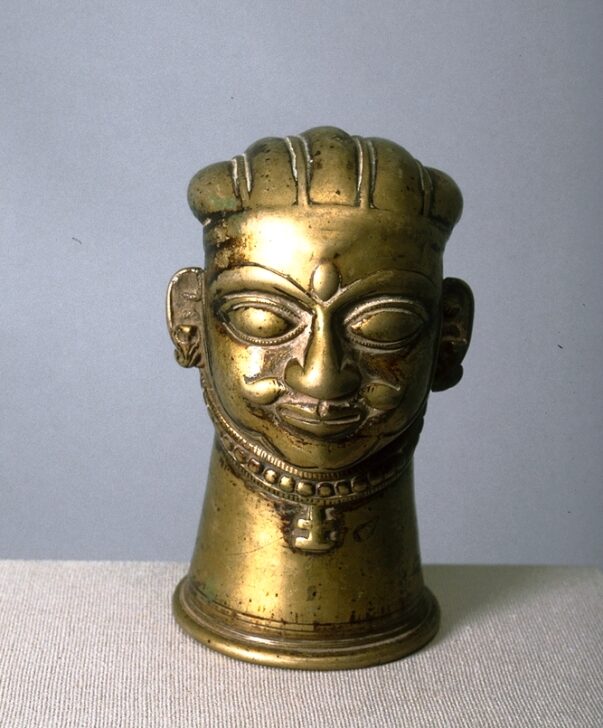Shiva, in his form as ekamukhalinga
Indian

Description
March 28, 2009
Shiva is believed to reveal himself to human beings in different and often contradictory forms. This object is a combination of two: a human face and a linga. The linga, or vertical shaft, dates back to the earliest representations of Shiva, and it is primarily in this form that Shiva is worshiped in the temple’s sanctum. It is often misinterpreted as a phallus, but more often it is an entirely abstract sign—a simple, rounded column, or even an uncarved stone. And, while the linga is associated with Shiva’s creative power and myths of castration, its meaning transcends singular identification with the phallus. The shaft may be differentiated into three sections linked with Brahma, Vishnu, and Shiva; in other instances it appears as a fiery column of light. Here, the linga appears as an abstract column articulated simultaneously as Shiva’s neck and face. This startling juxtaposition is yet another means for representing the indefinable: a god that transcends all categories.
(Label for UMMA South and Southeast Asia Gallery Opening Rotation, March 2009)
Subject Matter:
Shiva reveals himself in different and often contradictory forms. This object is a combination of two: a human face and a linga. The linga, or vertical shaft, dates back to the earliest representations of Shiva, and it is primarily in this form that Shiva is worshiped in the temple’s sanctum. It is often misinterpreted as a phallus, since it appears at times with lines representing a glans penis. More often, it is an entirely abstract sign— a simple rounded column, or even an uncarved stone. And, while the linga is associated with Shiva’s creative power and myths of castration, its meaning transcends singular identification with the phallus. The shaft may be differentiated into three sections linked with Brahma, Vishnu and Shiva; in other instances it appears as a fiery column of light. Here, the linga appears as an abstract column articulated simultaneously as Shiva’s neck and face. This startling juxtaposition is yet another means for representing the indefinable: a god that transcends all categories.
Physical Description:
Possibly used to cover a linga, a phallic representation of the god Shiva or representing a linga decorated with a face of Shiva, we find a stylized face on a tall, thick cylindrical neck. He is depicted with large, wide open eyes consisting of a double line above and below with a heavy eyebrows above them. A third eye is between them in a vertical direction. He has thick lips and wears a luxurious moustache. A decorated band fits tightly under his chin and may represent a decorated beard of necklaces. At the bottom of the band is a stylized linga on a base, looking like a cross on a line. His ears sport snake earrings and his hair is worn combed back from the forehead in wide matted bands.
Usage Rights:
If you are interested in using an image for a publication, please visit https://umma.umich.edu/request-image/ for more information and to fill out the online Image Rights and Reproductions Request Form.